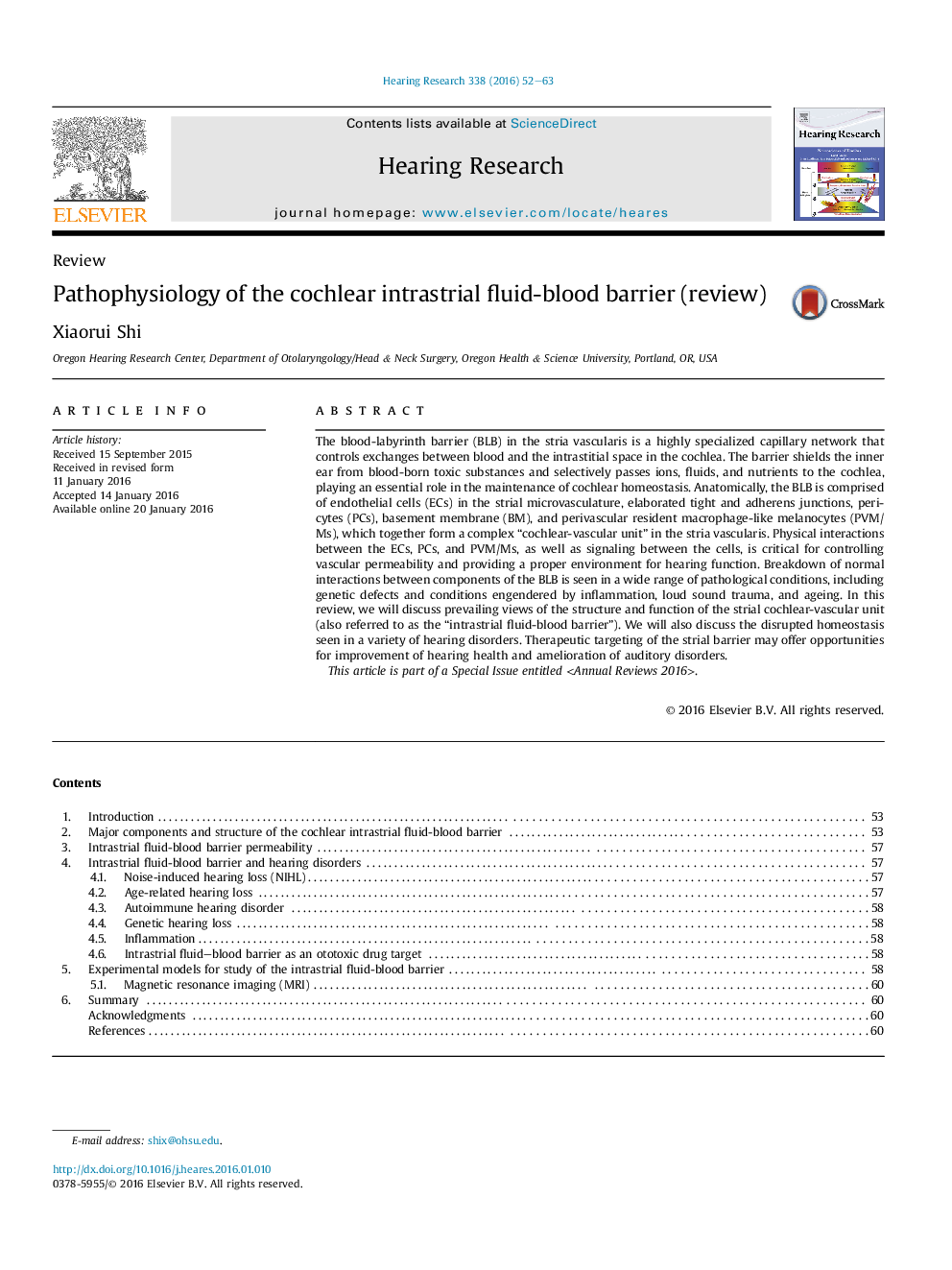| کد مقاله | کد نشریه | سال انتشار | مقاله انگلیسی | نسخه تمام متن |
|---|---|---|---|---|
| 4355063 | 1615562 | 2016 | 12 صفحه PDF | دانلود رایگان |
• The blood-labyrinth-barrier (BLB) in the stria vascularis (“intra-strial fluid-blood barrier”) is a complex “cochlear-vascular unit” in the stria vascularis.
• A functional intrastrial fluid-blood barrier is critical for maintaining solute and ion homeostasis and preventing the influx of toxic substances in the inner ear.
• Disruption of the barrier is associated with different clinical hearing disorders. Therapeutic targeting of barrier function may lead to the amelioration of hearing loss.
The blood-labyrinth barrier (BLB) in the stria vascularis is a highly specialized capillary network that controls exchanges between blood and the intrastitial space in the cochlea. The barrier shields the inner ear from blood-born toxic substances and selectively passes ions, fluids, and nutrients to the cochlea, playing an essential role in the maintenance of cochlear homeostasis. Anatomically, the BLB is comprised of endothelial cells (ECs) in the strial microvasculature, elaborated tight and adherens junctions, pericytes (PCs), basement membrane (BM), and perivascular resident macrophage-like melanocytes (PVM/Ms), which together form a complex “cochlear-vascular unit” in the stria vascularis. Physical interactions between the ECs, PCs, and PVM/Ms, as well as signaling between the cells, is critical for controlling vascular permeability and providing a proper environment for hearing function. Breakdown of normal interactions between components of the BLB is seen in a wide range of pathological conditions, including genetic defects and conditions engendered by inflammation, loud sound trauma, and ageing. In this review, we will discuss prevailing views of the structure and function of the strial cochlear-vascular unit (also referred to as the “intrastrial fluid-blood barrier”). We will also discuss the disrupted homeostasis seen in a variety of hearing disorders. Therapeutic targeting of the strial barrier may offer opportunities for improvement of hearing health and amelioration of auditory disorders.This article is part of a Special Issue entitled
Journal: Hearing Research - Volume 338, August 2016, Pages 52–63
